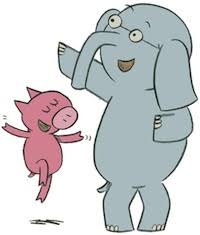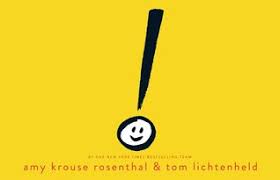This is my first attempt at the wonderful August Picture Books 10 for 10! I'm a first grade teacher, looking forward to learning about books that other teachers can't live without, and poised to continue my Amazon.com habit.
Hmmm...ten pictures books I can't live without. I might be able to narrow down to 100, but only 10...not so much. To help with a little focus, I chose ten picture books I love to use in beginning of the year to build community and acceptance, an attitude of possibility and growth, and enthusiasm for reading and literature.
In no particular order...

#1 Pete the Cat, I Love My White Shoes--Eric Litwin, art by James Dean
I love everything about this book: the colorful and engaging illustrations, the song and the rhythm, and of course, Pete's coping skills and attitude of resiliency. We go back to this book throughout the year for the fun of it and its message!

#2 (Cheating here): Any and all Elephant and Piggy books--Mo Willems.
First grade (actually, any grade!) perfection--story, character, illustrations, accessibility, engagement, fun...

#3 Press Here--Herve Tilet
This book amazes with its ability to engage and amuse even the most tech savvy, video game oriented child! Interactive, simple, and the best fun! I need a new copy -- my well-loved original is beginning to fall apart.
#4 Cool Dog, School Dog--Deborah Heiligman, illustrated by Tim Bowers
Fun for the beginning of the year and to come back for rhymes, word work, vocabulary, fluency, as a mentor text...
#5 One World, One Day--Barbara Kerly
This stunning National Geographic book tells in pictures and few words, a story of commonality and diversity around the world as children live just one day. Having churros or toast for breakfast, traveling to school via school bus or zip line, working or playing after school..."all the possibilities of just one day." Details of the photos and a world map are included. Lots to wonder about and discuss.
#5 Whoever You Are--Mem Fox, illustrated by Leslie Staub
Similar to One World, One Day, this book also celebrates the similarities and differences among children around the world in Mem Fox's sparse, beautiful, and repetitive poetry perfectly matched by Leslie Staub's colorful and meaningful illustrations.

#6 Cookies: Bite-Size Life Lessons--Amy Krouse Rosenthal, illustrated by Jane Dyer
Using cookies to "illustrate" (in more ways than one!) concepts like proud and modest, greedy and generous, this book beautifully creates character lessons that we return to over and over.

#7 One: Kathryn Otoshi
A simply powerful story about bullies, bystanders, and the courage of one.

#8 ! (Exclamation Mark)--Amy Krouse Rosenthal and Tom Lichtenheld
Any book from these clever folks would make this list! About acceptance of self, and finding one's voice and place in the world (and also about punctuation) this is a winner all around!


#9 Ish--Peter Reynolds and Beautiful Oops--Barney Saltzberg (cheating, I know)
Two books that celebrate risk-taking and learning from mistakes. Peter Johnston (Opening Minds) and Carol Dweck (Mindset) have me thinking so much about fixed vs. dynamic performance perspectives. These two books bring to life the concepts of honoring and learning from "mistakes" and using them to grow.

#10 One World, Many Cultures--Judy Cooper and Maryann Dobeck
This is beautiful informational text to extend the thinking from Whoever You Are and One World, One Day. Lots of features of informational texts to teach about diverse housing, food, clothing, and celebrations. Available as a big book.
What I'm also sure to include early in the year: alphabet books, familiar fairy tales, wordless books and poetry!
Thanks to our hosts, Cathy Mere and Mandy Robek, for organizing this event!
Using cookies to "illustrate" (in more ways than one!) concepts like proud and modest, greedy and generous, this book beautifully creates character lessons that we return to over and over.
#7 One: Kathryn Otoshi
A simply powerful story about bullies, bystanders, and the courage of one.
#8 ! (Exclamation Mark)--Amy Krouse Rosenthal and Tom Lichtenheld
Any book from these clever folks would make this list! About acceptance of self, and finding one's voice and place in the world (and also about punctuation) this is a winner all around!
#9 Ish--Peter Reynolds and Beautiful Oops--Barney Saltzberg (cheating, I know)
Two books that celebrate risk-taking and learning from mistakes. Peter Johnston (Opening Minds) and Carol Dweck (Mindset) have me thinking so much about fixed vs. dynamic performance perspectives. These two books bring to life the concepts of honoring and learning from "mistakes" and using them to grow.
#10 One World, Many Cultures--Judy Cooper and Maryann Dobeck
This is beautiful informational text to extend the thinking from Whoever You Are and One World, One Day. Lots of features of informational texts to teach about diverse housing, food, clothing, and celebrations. Available as a big book.
What I'm also sure to include early in the year: alphabet books, familiar fairy tales, wordless books and poetry!
Thanks to our hosts, Cathy Mere and Mandy Robek, for organizing this event!
